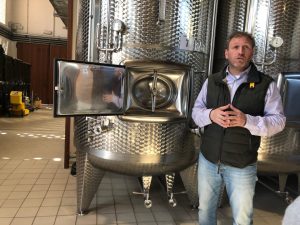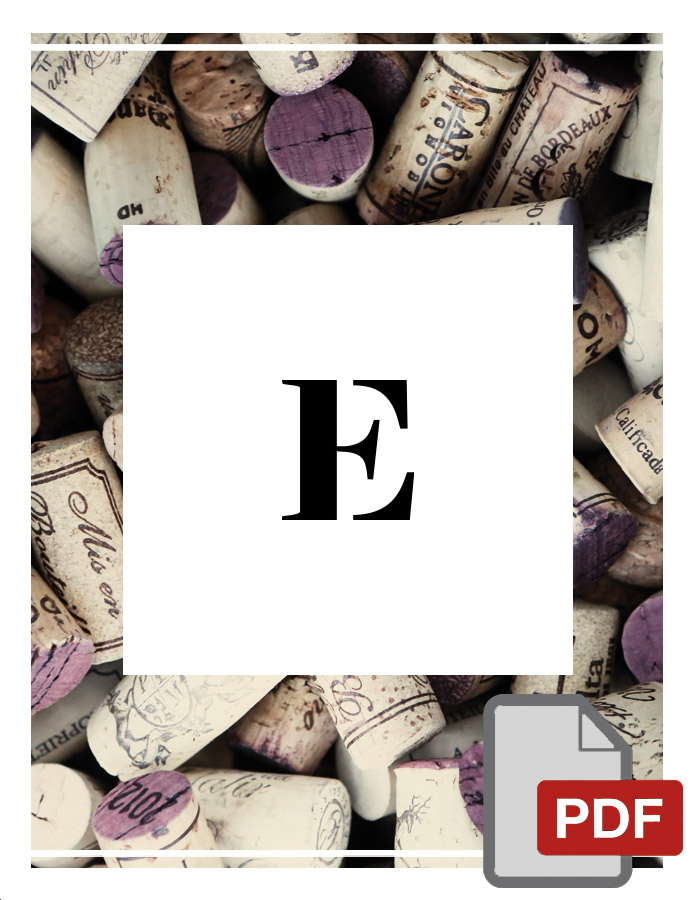Wineries
Visiting the Roccat winery

This week we had the honor of visiting the Roccat winery located in the heart of Valdobbiadene; 6 hectares of vineyard based in the historic area of San Pietro di Barbozza, a hilly area which has always been suited to the production of Prosecco DOCG.
Roccat is a family-run winery founded in 1929, today the winery is managed by Manuel, the grandson of the founder who at the age of 94 is still very present in the company.
Looking at the vineyard, we immediately notice that the distance between plants as well as the distance between rows is quite large compared to normal vines; this is also done to preserve the quality of the product. Here is the rule dictated by the grandfather: prosecco (glera) needs space because it is a vigorous and productive vine; the grapes are large and need air to ripen.
Even the ages of the vines are considerable, ranging from 32 years (the youngest) to 120 years.
The winery is also renting and additional 2 and a half hectares of vines in the DOCG area.
The Cellar
The grapes are manually harvested and softly pressed (think that in the past presses squeezed the grape at 400 atmospheres, the modern ones do it at 0.8 atmospheres) in the months of September and October. During the harvest the grapes are selected and divided in order to create different base wines for each wine Manual is going to do; after the pressing phase, the must is transferred to various tanks where the first alcoholic fermentation takes place; fruit sugars are attacked by yeasts that produce alcohol and carbon dioxide; being the tanks open, the carbon dioxide evaporates leaving the fermented wine with the alcoholic degrees.
But why do we need so many tanks and so many selections? Because the wines are different and have different needs. To give you an example, the prosecco brut is a very dry wine that needs structure and therefore it makes a little maceration on the skins so they have to choose the tub with a greater organoleptic structure; to make the dry, which is a sweeter wine, you need a lot of acidity and the must (the nectar).
In this cellar, the tanks are also divided by vineyard area; each tank is linked to a particular piece of the vineyard and Manuel holds a “secret diary” which contains all the activities / actions done in the vineyard and in the cellar. These diaries contain the history of the winery itself; every year is unique!
Making the Sparkling wine
Once the selection has been made, the base is placed in an autoclave (cistern that holds the pressure) where the sugar and the yeast are added. The quantities of both sugar (refined cane that has less influence on the taste of the wine) and yeast (Roccat uses only yeasts “of the past” not perfumed), is previously defined and varies according to the type of wine. While those steps are ticked, the wine in the autoclave is at a temperature of 18 degrees (ideal temperature for foaming); fermentation begins; the alcohol accumulates in the wine; the carbon dioxide in this case does not evaporate because the tank is closed and therefore creates bubbles.
During fermentation the temperature of the wine also rises and increases the speed of the sparkling babbles creation; the slower the sparkling process is, the smaller the bubbles are; when the sparkling process is faster, the bubbles are bigger. Temperatures are kept under control with the cold.
In order to obtain prosecco the autoclave must reach a pressure of 6 atmospheres, at Roccat this step takes about a month of fermentation, as they increase 0.2 / 0.3 atmospheres per day; this means that every day for each autoclave Manuel needs to check pressure and temperature. It is an end game of balances; if the temperature is lowered too much the yeasts could stop working; if the temperature is too high it may reach the 6 atmospheres used to obtain the sparkling wine too quickly.
Another check that is done every day is the cleaning (venting) of carbon dioxide. By venting the autoclave you can smell the carbon dioxide. The first sign of a good fermentation is the perfume; if everything goes well, it tastes like fruit (apple) if it’s bad … it tastes like garlic.
Once the 6 atmospheres are reached the wine is cut down to zero degrees.
At zero degrees the fermentation stops, the yeast no longer eats sugars and releases softness. The bubble refines even more. This process can take up to 6 months
When Manuel is satisfied with the result he proceeds with bottling.
Bottling
The wine is bottled at -2 / -3 degrees so that the bubbles remain still. The bottle is filled with nitrogen at 6 atmospheres; once the operation is completed, the bottles are placed in special crates where they remain at room temperature for a week and then labeled.
Roccat produces about 100,000 bottles a year and the level of solphites in all their wines is lower than the official approved level for organic wines.
The company also produces 200,000 bottles of prosecco per year for other wineries.
The next time you pass by Valdobbiadene and you went to drink a good glass of Prosecco make sure you stop by the winery Roccat; Manuel and his family will welcome you warmly into their home!





